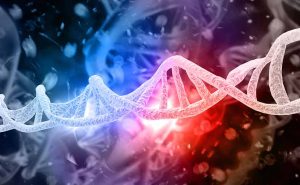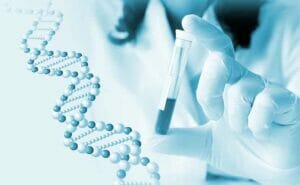Learn about signs of trisomy 21 (Down syndrome) during pregnancy with our doctor-supervised guide. Get expert insights, understand the indicators, and trust Hiro Clinic for reliable information on prenatal care.
- Causes of 21 trisomy (Down syndrome)
- Are newborns with 21 trisomy (Down syndrome) now on the rise?
- Are there signs of 21 trisomy (Down syndrome) during pregnancy?
- When can 21 trisomy (Down syndrome) be detected by ultrasound?
- Characteristics of the fetus with 21 trisomy (Down syndrome)
- Is there such a thing as Down syndrome ‘not known until birth’?
- Physical characteristics of newborns with 21 trisomy (Down syndrome)
- Life expectancy of Down syndrome
- Summary
- FAQs about the signs of Down syndrome
Causes of 21 trisomy (Down syndrome)
is a chromosomal abnormality in which there are only two chromosomes, but an extra 21st chromosome, making a total of three. It is said to be the most frequent chromosomal abnormality. Most cases of three chromosomes are accidental and can occur in anyone.
Down syndrome is classified into three types according to the characteristics of the chromosome abnormality: normal, translocation and mosaic. The most common chromosomal abnormality is the ‘normal’ type, which accounts for more than 90% of all cases.
The normal type is caused by an increase in the number of chromosomes due to a failure in chromosome segregation, which would normally result in an extra 21st chromosome, instead of one chromosome from the father and one from the mother.
Recent studies have shown that the risk of developing the normal form derives from the mother’s age. The older the birth, the higher the chance of the birth of a baby with Down syndrome. Note that the age of the father has little to do with the incidence of Down syndrome.
The translocation type also occurs because part of the 21st chromosome of one of the parents is attached to another chromosome.
Mosaicism occurs when cells with chromosomal abnormalities are mixed with normal cells.
The ‘type’ of Down syndrome can be definitively diagnosed by taking a small blood sample and having a chromosome test.
Chromosome 21 is the smallest of all human chromosomes. As a result, there is less genetic information stored in the chromosome and the probability of a genetic abnormality affecting the survival of the baby is low. As a result, the probability of a baby being born is considered higher than for other chromosomal abnormalities.
Are newborns with 21 trisomy (Down syndrome) now on the rise?
One in 600-800 newborns with Down syndrome is born, but the probability of conception of a newborn with Down syndrome increases in proportion to the mother’s age at birth, as shown in the table below.
| 20 years old | 1 in 1450 |
|---|---|
| 25 years old | 1 in 1250 |
| 30 years old | 1 in 952 |
| 35 years old | 1 in 385 |
| 40 years old | 1 in 106 |
In pregnancies of 35 years or older, known as older births, the probability of Down syndrome is four times higher than in pregnancies of 20 years old.
In recent years, the number of older births has been increasing due to women’s entry into society and advances in fertility treatment. The Japan Society of Obstetrics and Gynaecology defines women whose first birth was at least 35 years old as ‘older first-time mothers’.According to the Vital Statistics published by the Ministry of Health, Labour and Welfare in 2019, approximately 29% of births are over 35 years old, meaning that one in three or four births are older. However, it has been reported that the majority of children with Down syndrome are born to women under 35 years of age, so it cannot generally be said that the number of newborns with Down syndrome is increasing due to an increase in the number of women giving birth at older ages.
Are there signs of 21 trisomy (Down syndrome) during pregnancy?
There are rumours such as “morning sickness during pregnancy is associated with foetal Down syndrome.” However, it is important to note that there is no scientific evidence linking the mother’s physical condition during pregnancy to Down’s syndrome in the foetus.
Morning sickness is a symptom of changes in the balance of female hormones as a result of pregnancy. The presence and severity of morning sickness varies very much from person to person, and being pregnant with a foetus with Down syndrome does not affect its severity.
In addition, many pregnant women are sensitive to minor physical changes during pregnancy, but minor physical changes that a pregnant woman feels are not enough to say that they are a sign or indication of Down syndrome in the foetus. In order to check for congenital diseases and chromosomal abnormalities in the foetus, it is necessary to undergo tests such as ultrasound echocardiography, prenatal diagnosis and definitive diagnosis after NIPT.
NIPT is a test that analyses fragments of foetal DNA in the mother’s blood to determine whether there is a high probability of chromosomal abnormalities such as Down syndrome. The test only requires a blood sample and is attracting attention as it is less burdensome for both the mother and the foetus.

When can 21 trisomy (Down syndrome) be detected by ultrasound?
There are several ways to find out whether a foetus has Down syndrome. One of these is the ultrasound examination performed during antenatal check-ups. Echocardiography during pregnancy is used to check the growth and physical characteristics of the foetus, but also to observe the physical characteristics of a foetus with Down syndrome.
What is 2D, 3D and 4D echo?
There are three types of echocardiography: 2D, 3D and 4D. The features of each type of echocardiography are summarised below.
| 2D | General ultrasound examination. Cross-sectional images to observe the growth of the baby’s skeleton and internal organs. |
|---|---|
| 3D | A still image created from 2D echo information and coloured to create a three-dimensional representation. The inside of the body cannot be seen. |
| 4D | Animated 3D echo image. The inside of the body cannot be seen. |
Can an ultrasound at 7-9 weeks’ gestation reveal Down syndrome?
The foetus at 7-9 weeks’ gestation is about the size of a strawberry. It is so small that it is difficult to detect abnormalities even with 3D and 4D ultrasound.
It is only after 11 weeks’ gestation that physical findings characteristic of a foetus with Down syndrome are likely to be found on echo examination. After 11 weeks, the foetus has grown to the size of an adult’s fist and is large enough to be examined for physical features.
However, the ultrasound is only used to confirm physical characteristics. It can only determine the ‘likelihood’ of Down syndrome. A definitive diagnosis of Down syndrome requires definitive tests such as amniocentesis and chorionic villus examination.
Characteristics of the fetus with 21 trisomy (Down syndrome)
From 11 weeks’ gestation onwards, the physical features that are often observed in foetuses with Down syndrome are easier to observe on ultrasound examination. The following features may be present if there is a possibility of Down syndrome.
Swelling at the back of the neck
One of the features of Down syndrome that can be seen on echo examination in the first trimester of pregnancy is a “swelling at the back of the foetal neck”. This is called the ‘Nuchal Translucency’ (NT) or the ‘posterior neck subcutaneous clear area of the foetus’.
Swelling of the subcutaneous tissue at the back of the neck is a physiological phenomenon that occurs in all foetuses in early pregnancy. However, in the case of Down syndrome, it thickens from early to late pregnancy and is associated with an increased frequency of foetuses with chromosomal abnormalities and abnormal heart function and morphology.
However, a large NT value on echo may not be a definitive diagnosis of Down syndrome, as it may be a different disease from Down syndrome or no chromosomal abnormality may be seen.
Shape of the nose
The distinctive shape of the nose is another feature of Down syndrome that can be seen on ultrasound examination. In Down’s syndrome, “short nasal bones” are noted. The growth of the nasal bones is delayed, resulting in a flattened face with a low nasal bridge. However, genetic factors must also be taken into account, and a low nasal root and flat face are not a definite diagnosis of Down syndrome.
Shape of the head
It has been noted that in approximately 45% of Down syndrome foetuses, the length of the head tends to be shorter than the width of the head. In normal foetuses, the width of the face decreases as the face grows, but in Down syndrome foetuses, the characteristic of the length of the head being shorter than the width of the head becomes more pronounced as the face grows.
Others
Complications of Down syndrome include heart disease. In some cases, echoes may show blood reflux in the foetal heart or abnormalities in its shape. However, it is difficult to detect heart disease on echo in early pregnancy, and it is not uncommon for the possibility of a heart abnormality to be identified in the middle or later stages of pregnancy.

Is there such a thing as Down syndrome ‘not known until birth’?
There is a non-zero per cent risk that the possibility of Down syndrome was not identified during pregnancy and ‘not known until birth’. The following are two cases where Down syndrome was not identified before birth.
Cases not noted by echo
Echocardiography is limited in the range of what can be seen depending on the position of the foetus. Furthermore, in some cases, the possibility of Down syndrome is not indicated by echocardiography alone, as the image is depicted by ultrasound rather than by direct visual observation.
Cases where no prenatal diagnosis had been made
Tests such as prenatal diagnosis and definitive diagnosis after NIPT are necessary to investigate congenital diseases and chromosomal abnormalities in the foetus. It is quite possible that an ultrasound examination during antenatal care alone could not detect foetal abnormalities such as Down syndrome.
Physical characteristics of newborns with 21 trisomy (Down syndrome)
Down syndrome is characterised by its appearance, including facial features and the size of the hands. This section describes the physical characteristics that are often seen in newborns with Down syndrome.
Slant or almond-shaped eyes
Down syndrome causes the bones in the centre of the face to develop slowly. As a result, the space between the eyes may appear wider, the eyes may be slightly pinched, and the nose may be lowered.
Palm
The physical features of Down syndrome also appear on the palms of the hands. The palms of the hands show a characteristic deep horizontal line of wrinkles, known as the ‘single palm flexure line’. Fingerprints are also characteristic, with multiple horizontal flowing patterns.
Having short fingers
Down syndrome is characterised by short fingers in the hands. In particular, the little finger usually has three joints, whereas in Down syndrome it may have two. Another feature is that the little finger is bent inwards.
Others
Other features of newborns with Down syndrome are that their ears are small and located low on the head. They also have features such as the tops of the ears being folded or the ears being rounded inwards.
Life expectancy of Down syndrome
Until 20-30 years ago, people with Down syndrome lived shorter lives. This was because they were at high risk of a short life due to various complications such as heart disease and low resistance. In recent years, treatment outcomes for complications have improved and people are living longer, with the average life expectancy increasing to around 60 years.
Relationship between older age and miscarriage
Older births are more likely to result in miscarriage as well as congenital and chromosomal abnormalities in the foetus. This section explains the reasons for this.
Miscarriage in the presence of chromosomal abnormalities
It is estimated that 50-70% of miscarriages have chromosomal abnormalities.
Generally, 80% of miscarriages occur before the 12th week of pregnancy, but the time at which miscarriages are most likely to occur depends on whether there is an abnormality in the number or the structure of the chromosomes.
| When miscarriages are most likely to occur | |
|---|---|
| Numerical anomaly | Up to 8 weeks’ gestation |
| Structural abnormality | Around 13 weeks’ gestation |
What is a comitting abortion?
A comorbid miscarriage is a miscarriage that is first noted when an ultrasound fails to show a foetal heartbeat or growth, even though the mother has no symptoms at all.
The growth and heartbeat of the fertilised egg or foetus with chromosomal abnormalities has stopped and remains in the uterus, or there is no foetus to be seen, only a fetal sac. Complementary miscarriages are most common in early pregnancy, within 11 weeks of conception, and have a probability of around 15%.
Summary
Down syndrome is a chromosomal abnormality that can happen to anyone by accident. And it is known that the risk of Down syndrome and other chromosomal abnormalities increases with maternal age. Sometimes, after 11 weeks of pregnancy, the possibility of Down syndrome can be determined by an ultrasound scan. Prenatal diagnosis and NIPT can also determine the possibility of Down syndrome. Please feel free to contact Hiro Clinic NIPT for testing and consultation on Down syndrome.
【References】
- National Centre for Inclusion and Medical Research – Down syndrome
- MSD Manual Professional Edition 19.Paediatrics – Down syndrome (21 trisomy)
- Ministry of Health, Labour and Welfare – Report of the Study Group on the Future of Specific Treatment Support Services for People Suffering from Infertility
- Japanese Society of Obstetrics and Gynaecology, Ministry of Health, Labour and Welfare – ‘Second Study Group on the Health and Medical System for Expectant and Nursing Mothers’ Current status and issues in the treatment of expectant and nursing mothers
- Japan Society of Obstetrics and Gynaecology – About Nuchal Translucency
- Chinese and foreign medicine – What is Down syndrome (21 trisomy)?
Q&A
-
QWhat should I do if I have signs of Down syndrome during pregnancy?There is no medical evidence showing a link between daily physical changes during pregnancy and signs of Down's syndrome.
However, older births are associated with an increased risk of miscarriage as well as foetal congenital and chromosomal abnormalities.
Do not hesitate to see a doctor if there are any changes in your health or if you experience vaginal bleeding.
 中文
中文






















